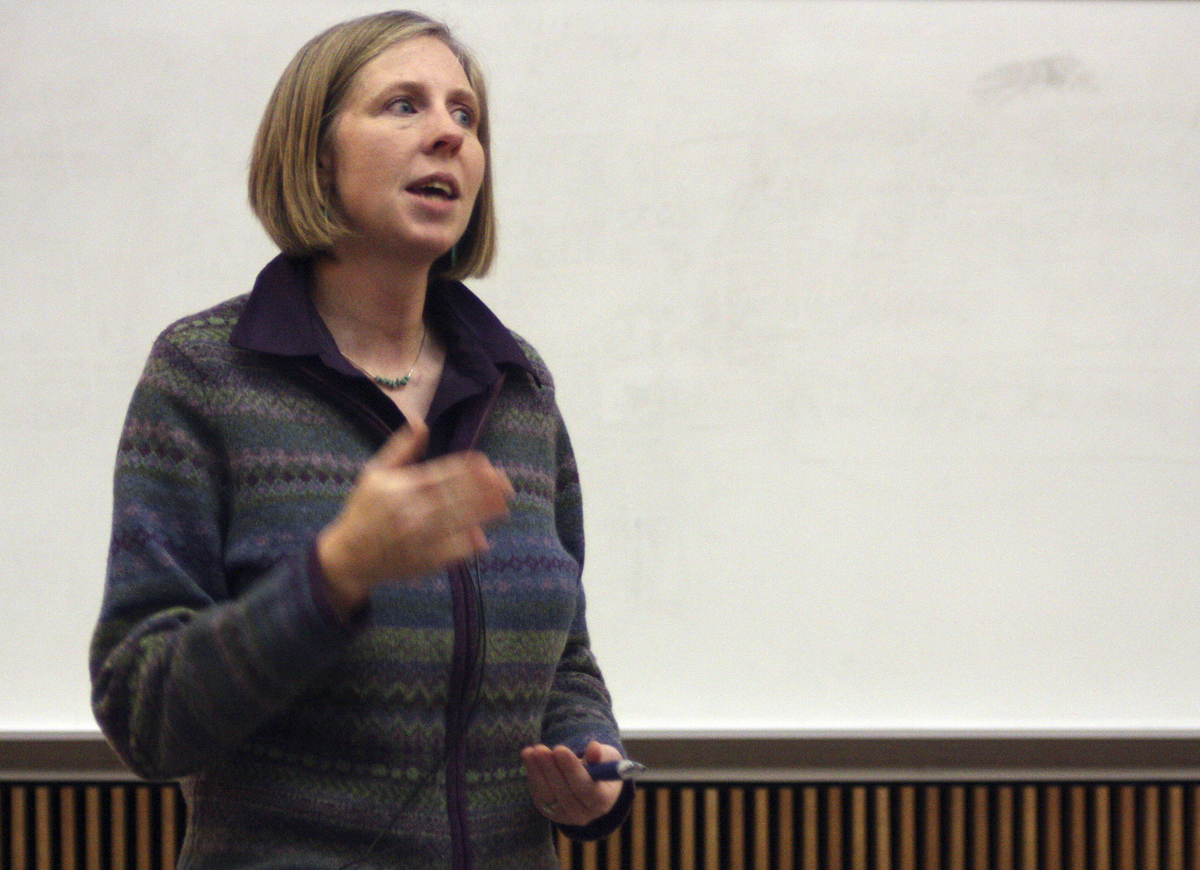USU scientists use past to learn about climate change
The earth goes through normal cycles of warming and cooling, and scientists such as USU’s Tammy Rittenour study how these changes affect the environment over extended periods of time.
Rittenour, an assistant professor in USU’s geology departmentwas the key speaker at Friday’s Science Unwrapped in a continuing series covering climate change.
Rittenour is also the director of the luminescence lab and is a paleoclimatologist. Paleoclimatologists study ancient climates using methods including the study of ice cores, fossil pollens, tree rings, coral and luminescence dating of sediment, according to the National Oceanic and Atmospheric Administration.
“We get samples from all over the world and we date the last time sediment was exposed to sunlight,” said Michelle Nelson, lab manager at the luminescence lab and assistant to Rittenour.
“In Europe we have climate records or temperature records that go back to the late 1700s,” Rittenour said, “so we need to rely on something else to cover those gaps, to cover the gaps in time. We only have a 110 years and the longer records are available using geologic records.”
Rittenour said observing variables in environmental proxies, which are observable remnants of the past, such as tree rings, can give a general idea of what the climate was like. These variables can then be compared to data that has been collected about the climate in the area as well as variables such as isotopes that are collected from ice core samples.
Data can also be collected from biological sources in the form of fossils. A fossil of a plant normally found in tropical regions that is later discovered in a region which is no longer tropical, is a strong climate change indicator, she said..
Rittenour said the main difference between paleoclimatology, climatology and meteorology is the span of time a subject is studied. Climatologists such as Rob Davies, assistant professor and physicist for USU’s climate center, are primarily concerned with the last 30 to 50 years, while meteorologists are primarily concerned with current weather lasting about a week or more.
“She’s really trying to understand the natural tugs on the climate, and she’s doing that with data that goes back thousands of years,” Davies said. “Her data certainly has gone into results that all climate scientists are using.”
Davies said the data collected by paleoclimatologists is used to help create the models of what normal weather looks like without human interference, which can then be used to compare what the climate looks like with human influences, especially over the last 200 years.
Rittenour has been involved in projects worldwide that have been used to further the data used in her research.
“She has projects in New Zealand, in Corsica, France, the Olympic Mountains, Southern Utah; she’s been in the Grand Canyon,” Nelson said.
These projects and other like them allow for future predictions to be made, which can then be presented to other scientists for review, as well as to the public who can then use the information.
Rittenour said it’s important for the average person to understand this so that they can see how the scientific community makes the claims that it does, and how the data she collects helps climatologists to form a baseline for their studies.
“For the average student it would be important for just understanding the system that we are in,” Rittenour said.
After Rittenour’s lecture, there were several booths available to help explain the different aspects of paleoclimatology. These included displays of fossilized pollens, an explanation of how isotopes can be used to estimate climate and a fossil and rock identification table, as well as many others.
– randall.henry@aggiemail.usu.edu

